Handwriting Analysis: Margins
The blank sheet of paper represents life itself and what you draw on that blank sheet represents how you interact with other people and the life around you.
Writing proves everything that happens to the human being. Let’s see how the margins of a writing are analyzed. The analysis of writing must always be approached from an integral and gestalt point of view.
One piece of handwriting can be analyzed at a time, but always look at the entire writing sample before coming to a conclusion.
The act of writing reflects the fine motor activity that comes from the nerve system. It is an original, unique and dynamic expression that emerges from biological processes of man when interacting with the environment.
Graphology is a projective technique that is not limited to analyzing isolated features. Each graphic expression in particular must be integrated to acquire a meaning according to the context. A part is just a fraction of a larger whole. “A letter is not a text, like a door is not a house, nor is an arm a body”.
What our handwriting margins say about our personalities
Writing is original and dynamic because it is an expression of life and the goal of analysis is to catch that pace and vital movement that the individual expresses in the graphical context through graphical behavior. In order to achieve that goal, its graphical context must be studied from “general” to “particular”.
Also read: Handwriting and Personality Discover personality in Writing
The spatial symbolism theory of Max Pulver, (Physician and Psychologist born in Bern, 1889), allows interpretation regardless of the value given to each graphic feature in particular.
Jung’s friend Pulver discovers the symbolic value of space in writing. He also introduces contributions from Psychoanalysis to the analysis of writing. Psychology applies this theory in projective techniques
Each part of the sheet of paper is given an aspect of personality. You will find out if someone is spiritual, social or materialistic. If someone is religious or philosophical. In addition, it will tell you what is the physical energy and sexual drive of a person.
- Superior zone (superior third section of the sheet of paper)it is given the qualities that are related to the psychological level, such as thoughts, ambitions, the mental, spirituality and intellect. Freud, in the theory of the psychological apparatus calls it “Super-ego”.
- Middle zone (top half) it is related to feelings, emotions, daily life and personal needs. Freud locates the “Ego”. It represents the present of the individual and the principle of reality.
- Inferior zone (bottom half) it is associated to theconcrete. The vital, biological, instinctive, material, security and stability needs. Freud calls it “Id”.
If the sheet of paper is divided vertically, we discover a sequence from left to right that represents the way the writer moves from “me” to ”you”, revealing whether he faces the future and other people with optimism and hope or with fear and dread. The past is located on the left, the present in the middle, and the future on the right.
- Left zone reflects an immature “Ego”. The regressive aspects of not detaching from the mother, the past and the primary bonds. Introversion.
- Right zone situates a mature “Ego” in relationship to the outer world, communication and the future.
Graphology for Beginners. Margins in Graphology
The layout in Graphology is analyzed in the general distribution of the graphical mass (neatness, legibility, space between lines, words and letters, equilibrium between the written mass and unwritten free spaces), the margins of the written text and proportions between the different zones of writing. (Proportion must also be analyzed in the “shape” aspect).
The layout represents the relationship between the writer and reality. The distance he establishes in personal relationships (boundaries between his desire and the “other’s”) and the ability for planning, organization and adjustment to rules.
Also read: Handwriting Analysis Letter “t”: How do you cross your T’s.
Margins grant a frame to written text and limit the graphical conduct of the individual and impede that he is affected from anything coming from the outside (right margin: the others and the future. Left margin: degree of independence from the past).
In Graphology, it is important to point out, that at the beginning of a writing, the conscious is what prevails and, as we move forward, the subconscious starts to reveal. This is reflected in margins, mainly in the right and left ones. The gradient is established from the superior-left (governed by the conscious) towards the lower-right (governed by the subconscious).
Handwriting margins non- existent (it occupies the whole sheet of paper): Need for prominence, ignorance, psychological immaturity, disrespect, lack of consideration towards others and towards what belongs to others, ( it does not imply the imperious need of being surrounded by people). Personality that invades the others with a tendency to selfishness. Discourtesy. The same explanation may be given for margins filled with writing.
Also read: What your handwriting reveals: Graphology Basics
Graphology: Left Margin
In the space located between the left border of the sheet of paper and the first word of sentences, it is expected that there is a free space of 15% of the width of the sheet (2 centimeters) and regularity in the rest.
All that is located on the left side symbolizes what has been lived, the past, the mother figure, the bond with the family of origin. It represents the emotional and psychological stabilityof the individual (regularity of the left margin). When the individual is exposed to situations that are difficult to face or pleasant, regression, retraction or expansion is reflected in this margin.
From the psychological point of view, the inner world is organized in the first year of life. The mother is the first contact that the child has with the outer world. According to how the child has perceived this outer world (safe or dangerous place), he will build his inner strength. The balance between frustrations and gratifications will allow the child to build a safe inner world that will provide the ability to later detach from his mother, developing his own individuality. There is the importance of the provision of the needs of feeding and affection during this stage. When the human being as a child has felt he has not been loved and has not been provided with the primary needs, he will develop inner feelings of insecurity and dissatisfaction that will later affect his self-esteem.
- Absence of the left margin: Economical urgency, shyness, introversion, lack of social touch, lack of good taste and esthetic sense. Distrust, savings, caution, prudence. On the negative side: Greed, selfishness, meanness. Not very sociable personality.
- Small left margin: (10% of the width of the sheet of paper)). On the positive side: Sense of saving and economy, caution, shyness, introversion, attachment to family. On the negative side: Bad taste, selfish and possessive conduct, problematic social contact.
- Normal left margin: (15% of the width of the sheet of paper). On the positive side: Equilibrium, good esthetic sense, normal and simple life. Conscious order, harmony in tendencies. On the negative side: Excessive self-control.
- Rigid left margin: Symptom of excessive detail regarding order, bordering rigidity.
- Big left margin: (15% to 25% of the width of the sheet of paper). Generosity and extroversion. On the positive side: Sociability, amplitude of criteria, initiative, and decision. On the negative side: Exceeds his budget, ostentation, scarce reflection. Exaggerated left margin: (Over 25% of the width of the page) Ignorance of the sense of measure, chaos, extroversion, exhibitionism. On the positive side: Generosity, audacity, initiative. On the negative side: Waste of money, time and energy.
- Zig – Zag or irregular left margin: Presents alternated progress and regression, emotional instability, insecurity, inner fights, difficulties in organization with time and task planning.
- Left margin moves away downwards (increasing): Increases as the text moves forward. Extroversion, optimism, enthusiasm, initiative, tendency to detach from the mother. On the negative side: Impatience, nervousness and precipitation to achieve the goals that have been set, budgets in general (money matters, time and efforts) are exceeded and hard to accomplish, thoughtlessness, impulsiveness.
- Left margin moves closerdownwards (decreasing): It is reduced as the text moves forward. Initiatives are stopped, reflection, shyness and introversion, attachment to the past, to the family of origin, especially to the mother. On the negative side: Egocentrism, fatigue, depression, fear to the future, tendency to economize, greed.
- Convex left margin: Margin is increased to the middle of the writing and then it diminishes. Inner fight of a neurotic character, retraction of expansion, represses extroversion, stops impulse of economic waste.
- Concave left margin: Expresses inner fights that favor neurosis, accented psychological ambivalence, effort to stop the impulse of spending or the impulse of carrying out a life of waste. Modifies his attitude overcoming the natural tendency.
Read also: Eating disorders. Graphology: Anorexia in Handwriting
Graphology for Beginners
Graphology: Right Margin
In this margin we find the subconscious of the individual.It expresses the way in which the human being relates with the environment and outer reality. The vision he has of the future, expectations, initiative, trust, degree of intro-extroversion. Outer reality generates pressure, demands that sometimes require the need for change. The “Ego” of the individual must accept the challenges, submit to pressure and change for decision making and adjust his own needs to those that outer reality proposes. This creates anxiety, given that we do not always find the way to foster qualities. On occasions, outer reality limits our wishes.
The blank spaces that appear on the right margin (ghosts) express anguish and fear about the future. When the reality of the environment becomes overwhelming, the lines in the text shrink or get shorter. The right margin is inhibited. On the contrary, when we advance on this margin without control, it reflects impulsiveness and lack of self-control.
- Absence of right margin. The last letter of each line is located on the border of the sheet of paper. Initiative, sociability, decision, extroversion, seeks desperately contact with others, anguished need for contact. Samaritan people who give advice and help others. On the negative side: It is associated with the interpretation of an absent inferior margin (that cannot turn lines) with fear of “losing cohesion” of ideas and tendency to difficulty for adjustment. Thoughtlessness, precipitation, impulsiveness.
- Small right margin: (inferior to 8%) of the width of the sheet of paper. Extroversion, sociability, precipitation, aggression in order to defend himself from the pressure of the environment.
- Very big right margin: (20% of the width of the sheet of paper). Fear to risk, to the future, shyness, introversion, distrust, pessimism, fear to initiatives, feeling of abandonment. Deficient canalization of energy (wastes paper), anguish, supposed to place himself on the left side of the page due to what is inferred. Attachment to the family, mother, regression.
- Big: (12% of the width of the sheet of paper)
- Regular right margin: Expresses equilibrium in relationships, self-control, prudence, reserved, originality, good taste, distinction. On the negative side: Artificial attitude, shyness, inhibition, difficulty to relate to others.
- Irregular or zig-zag right margin (does not touch the border of the sheet of paper). On the positive side: Out-of-control emotive nature. On the negative side: Psychological ambivalence, instability, subconscious disorder, hesitations.
- Irregular or zig-zag right margin (touches on occasion and does not touch the border of the sheet of paper): unresolved affection. Relationships with others may suffer abrupt changes. Thoughtless acting. Does not respect the medium. Alternates aggression and caution.
- Right margin that moves away from the border (increasing): Lines move away from the border of the sheet of paper as we move forward on the writing. Fights between conscious and subconscious. Tendency to introversion and isolation, insecurity, fear, doubt and distrust on his own abilities.
- Right margin that moves closer to the border (decreasing): Gets closer to the border of the sheet of paper towards the end. Caution, prudence, tendency to stop the subconscious impulses that get him closer to others, to give affection, to socialize. Distrust.
- Condensed right margin: Words pile up towards the end of the line. Looks like he is unable to calculate the space of paper he is going to use. Difficulties for prevision, planning, organization. Lack of esthetic sense.
- Typographic margins. Book frame-like: Indicator of esthetic culture and of refinement. Enjoys harmony, decoration and loneliness.
“Ghosts” in Graphology: They are blank spaces without text that appear on the right margin. If they are on the superior section of the sheet of paper, they are interpreted as fears or anguish about the future. They affect the ability for decision-making . They are conscious. If they appear towards the end of the text they are subconscious. Both are neurotic symptoms.
Also read: Graphotherapy: Change your Handwriting
Top Margin
This margin symbolizes the “distance” the writer perceives in relation to the person he is writing to regarding the personally as well as professionally. It is measured from the first line to the border of the sheet of paper.
- Normal superior margin: (20% of the length of the sheet of paper). On the second sheet of paper, where there is more spontaneity and there is no date, a 10% to 15% long heading would be correct. Courtesy, good manners, ability to control impulses. Self-control.
- Narrow superior margin small or no right margin: (smaller than 10% of the total length of the sheet of paper). Need for prominence, need of being constantly surrounded by people (slant writing), proximity feelings towards the others or excessive trust, extroversion, invasion of others´ territory, tendency to selfishness, discourtesy, lack of culture and of esthetic sense. A better usage of the sheet of paper means sense of economy for time, money and effort (this is valid for all margins).
- Big superior margin: (10% to 20% of the length of the sheet of paper). Imposes distance. Knows how to listen and how to provide space for the others to communicate. Formality, introversion. If letters are big: generosity. If letters are small: disability, difficulty for adjustment.
- Exaggerated superior margin (over 20% of the sheet of paper): Introversion, difficulty for relating to others. Small letters express shyness, inferiority complex. Big letters mean waste of money, effort and time.
Bottom Margin
With the graphological study of this margin we pursue to find out the way the writer turns pages. That is why this is only analyzed in writings that are not signed. If the writing is signed, it loses validity. If the text has several pages, we only study the final one if it is only used almost in its totality. The fact of finishing a page and looking for another one to continue may subconsciously cause a certain opposition. We measure from the last line to the border of the sheet of paper. It symbolizes self-control and self-discipline, ability for adaptation to new tasks or situations.
- Big inferior margin: (superior to 15% of the width of the sheet of paper). It is measured from the final stroke to the border of the sheet of paper. Deficient canalization of energy and time, given that when turning pages and leaving too much blank space, this means that the individual cannot go in depth into matters in depth. Here is where the P.S. (postscript) appear. If it appears sporadically, its interpretation lacks any sense. Quite on the contrary, it reveals obsessive and perfectionist tendencies. When the P.S is placed in unestablished areas, like the margins, the signature area, the inferior border very close to the end of the sheet; we infer lack of esthetic sense and spatial placement.
- Very small or no inferior margin: It symbolizes resistance to change, which is confirmed if the final lines and words are grouped. The fear of turning to the next page reflects difficulties for logical associations. The saving of paper means that the individual prioritizes in a practical sense before the esthetic. Good administration of time. Self-control. On the negative side: Laziness, comfortableness.
Graphology Margins. Relationship Between Margins
- Large superior – small inferior: Distance with the receptor. Prioritizes the practical before the esthetic.
- Small superior – big inferior: Desire of closeness with the receptor, watches manners, impatience for turning pages.
- Big left – no right: Extroversion, impulsiveness, thoughtlessness.
- No left – big right: Shyness, held back, introversion.
- Right diminishes – left increases: Desire for contact with others, subconscious introversion.
- Left diminishes – right increases: Fears, effort made for communicating with others.
- Left and left are both big: Anguish
- Both stretch out: Insecurity.
- Both get wider: Search for security.
- Irregular: Affective instability. Difficulty in adjusting.
- No margins: Presence of psychological defense. Optimum administration of time and space. Possible verbosity.
- Excessive margins: Anguish, frustration, inhibitions, tendency to isolation, introversion.
This concludes this article Handwriting Analysis: Margins. Follow this web learning more about Graphology Letter “g” in handwriting. Follow us on facebook.


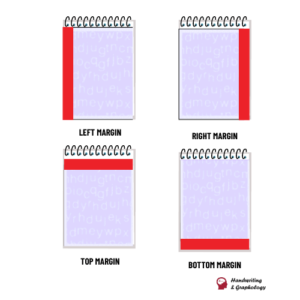
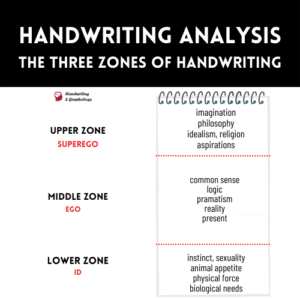
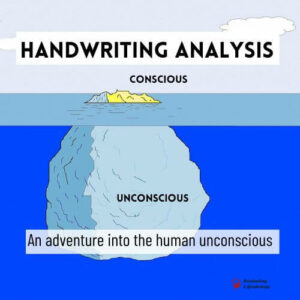
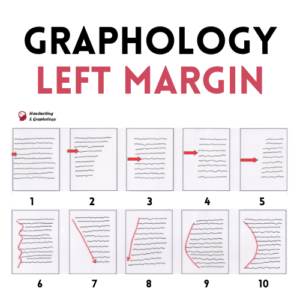

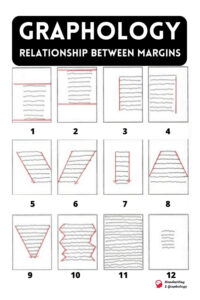
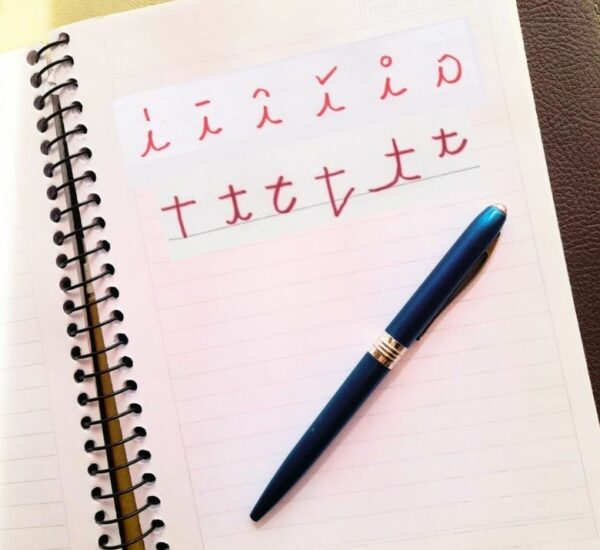
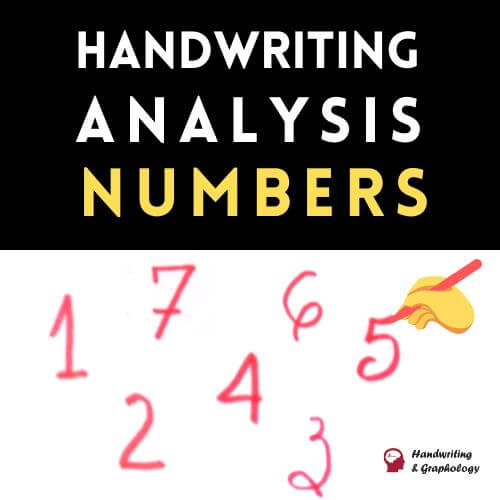
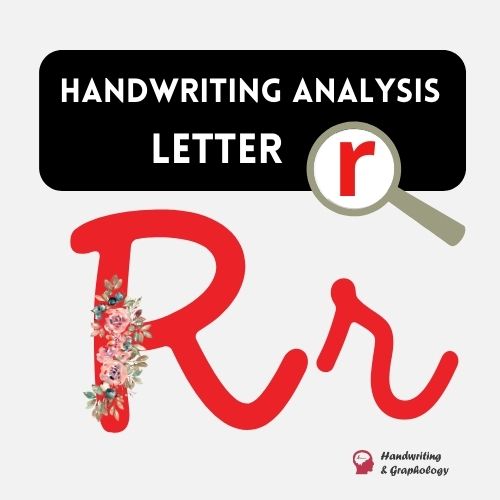
Excellent article. Thanks. There is so much to the study of graphology that I never tire of being reminded how to analyze samples.
Nice explanation
Superb.. veri well done. Who is the writer of this article